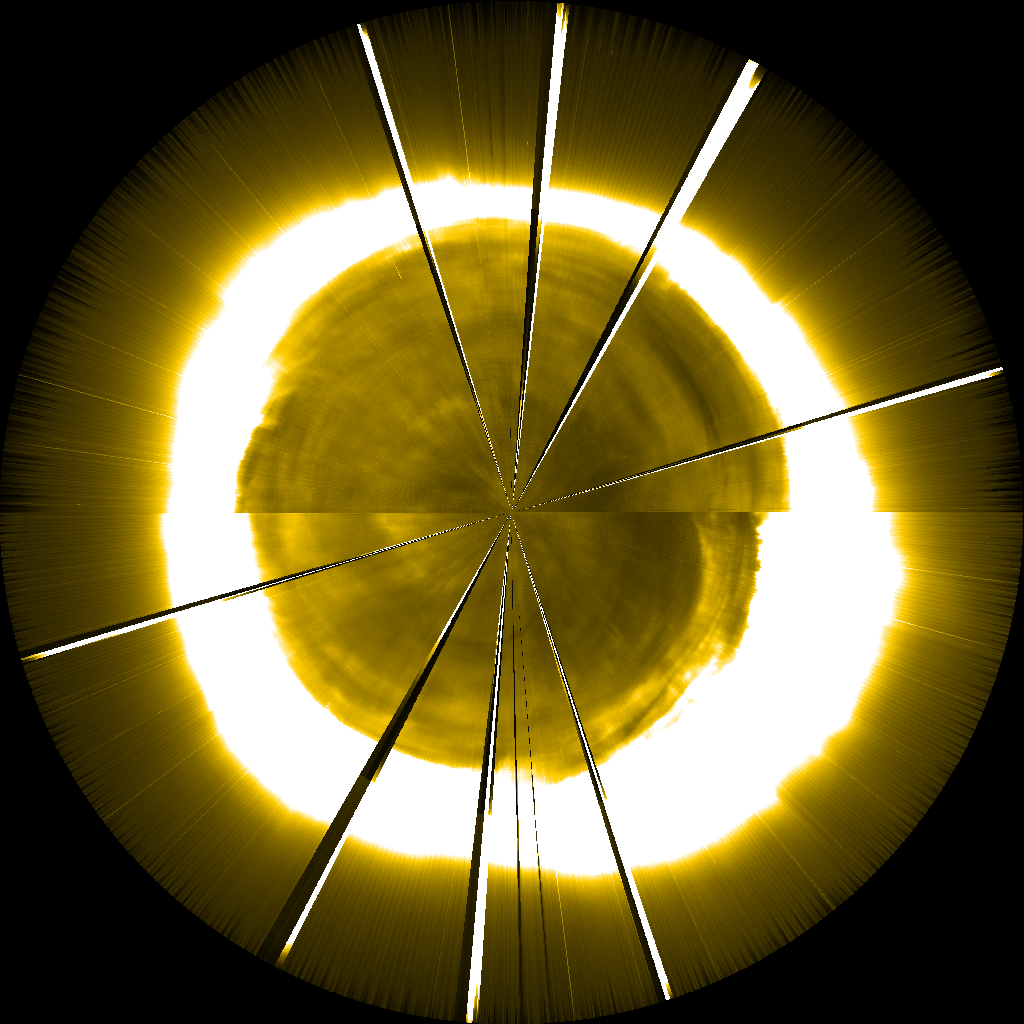- rescaling the data to a Sun-satellite distance of 1 AU
- removing the dark current
- correcting the data for the degradation trend
- converting the data in physical units
For more information about any of these steps, please refer to the LYRA instrument paper.
Still present in the calibrated data:
- the flat-field effects (i.e. some of the periodic features observed in the data might be linked to spacecraft maneuvers)
- the slow stabilization from MSM-diamond detectors (only applicable to LYRA channels 1-1, 1-3, 2-1, 2-3, 2-4)
ATTENTION: due to the strong degradation, data acquired by the nominal unit (unit2) in Lyman-alpha and Herzberg channels present a very low signal-to-noise ratio, and solar effects might not be easy to extract from them. These data must be used with caution after mid-2010.
Level2 data consist in daily fits files, updated after each contact with the spacecraft. They contain a primary header and a secondary header (described below), followed by the binary table of data.
| KEYWORD | EXAMPLE OF VALUE | COMMENT |
|---|---|---|
| SIMPLE | T | Written by IDL: Tue Feb 15 09:27:46 2011 |
| BITPIX | 8 | |
| NAXIS | 0 | |
| EXTEND | T | File contains extensions |
| ORIGIN | ’ROB-SIDC’ | |
| TELESCOP | ’PROBA2 ’ | |
| INSTRUME | ’LYRA ’ | |
| OBJECT | ’EUV solar irrad’ | |
| OBS_MODE | ’standard’ | science data |
| DATE | ’2011-02-15’ | |
| DATE_OBS | ’2010-05-01T00:00:00.004000’ | UTC start of observation |
| DATE_END | ’2010-05-01T21:41:22.150995’ | UTC end of observation |
| DATASRC | ’Redu ’ | receiving ground station |
| LEVEL | ’2 ’ | calibration level |
| ALGOR_V | ’EDG=2.1 BSDG=0.5’ | LYRA calibration S/W version |
| FILENAME | ’lyra_20100501-000000_lev2_std.fits’ | name of this FITS file |
| END |
| KEYWORD | EXAMPLE OF VALUE | COMMENT |
|---|---|---|
| XTENSION | ’BINTABLE’ | Written by IDL: Tue Feb 15 09:27:46 2011 |
| BITPIX | 8 | |
| NAXIS | 2 | Binary table |
| NAXIS1 | 45 | Number of bytes per row |
| NAXIS2 | 7789006 | Number of rows |
| PCOUNT | 0 | Random parameter count |
| GCOUNT | 1 | Group count |
| TFIELDS | 6 | Number of columns |
| EXTNAME | ’IRRAD LEVEL 2’ | name of binary table extension |
| TFORM1 | ’1D ’ | Real*8 (double precision) |
| TTYPE1 | ’TIME ’ | Label for column 1 |
| TUNIT1 | ’s ’ | Units of column 1 |
| TFORM2 | ’1D ’ | Real*8 (double precision) |
| TTYPE2 | ’CHANNEL1’ | Label for column 2 |
| TUNIT2 | ’W/m**2 ’ | Units of column 2 |
| TFORM3 | ’1D ’ | Real*8 (double precision) |
| TTYPE3 | ’CHANNEL2’ | Label for column 3 |
| TUNIT3 | ’W/m**2 ’ | Units of column 3 |
| TFORM4 | ’1D ’ | Real*8 (double precision) |
| TTYPE4 | ’CHANNEL3’ | Label for column 4 |
| TUNIT4 | ’W/m**2 ’ | Units of column 4 |
| TFORM5 | ’1D ’ | Real*8 (double precision) |
| TTYPE5 | ’CHANNEL4’ | Label for column 5 |
| TUNIT5 | ’W/m**2 ’ | Units of column 5 |
| TFORM6 | ’5A ’ | Character string |
| TTYPE6 | ’WARNING ’ | Label for column 6 |
| TUNIT6 | ’ ’ | Units of column 6 |
| END |
Then follows the binary table containing the data, which consists in 6 columns: the time, the irradiance in the four channels, and an index describing the quality of the calibration and time interpolation on the data.





